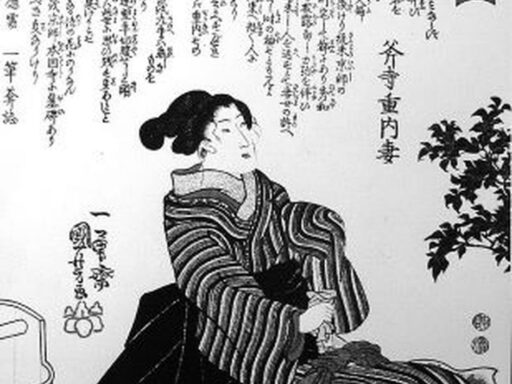Before the 20th century and the advent of mass media, people indeed had forms of relaxation that resembled the modern concept of “vegging out.” These activities were simple, repetitive, and low effort, often providing a mental break without demanding intense focus. A leading example is the cup and ball game, known historically as the bilboquet. This pastime involves a stick with a cup at one end and a ball connected by a string, challenging the player to catch the ball in the cup. It’s easy to transport and convenient for intermittent play, much like how people today might relax with video games or television.
Historical records trace the bilboquet back to at least the 1500s in Europe, with clearer evidence of its popularity emerging in the 18th century. Artworks from that period depict elegantly dressed individuals engaged in the game, indicating that it was common among the gentry and upper classes. The sophistication of skill involved sometimes matched what’s seen in modern yo-yo tricks, elevating the simple game into a refined leisure pursuit.
Despite its popularity, the bilboquet also attracted notable moral criticism during the Enlightenment. Philosophers like Denis Diderot and Jean le Rond d’Alembert condemned it as frivolous and idle, highlighting a broader societal tension regarding leisure. They argued that such activities, which lacked practical purpose or economic gain, symbolized morally suspect idleness. The bilboquet, therefore, became both a tool of entertainment and a symbol of the gentry’s “useless” relaxation.
Interestingly, similar devices appear outside Europe, showing a wider cultural practice of low-effort amusement. The Inuit, for example, used bone-crafted versions of the bilboquet, suggesting either independent invention or cultural exchange through trade routes. This cross-cultural presence emphasizes that simple repetitive games provided accessible mental breaks across different societies, fulfilling needs akin to modern vegging out.
| Aspect | Details | Example/Reference |
|---|---|---|
| Type of leisure | Simple, repetitive, low-effort activity | Cup and ball (bilboquet) game |
| Historical timeframe | Evidence from 16th to 18th century Europe | Artistic depictions from 1700s gentry |
| Social perception | Moral critique of idleness by Enlightenment thinkers | Diderot and d’Alembert’s warnings in 1700s |
| Cross-cultural occurrence | Similar devices in native Inuit culture | Bone bilboquets among Inuit people |
Aside from the bilboquet, other passive forms of relaxation likely existed. People engaged in quiet reflection, storytelling, or simple tabletop games that required minimal exertion. In contrast to today’s mass media, these pasttimes lacked extensive sensory stimulation. They allowed mental disengagement through physical simplicity, much like the slow repetitive motion of bilboquet play.
This historical view reveals that the human desire to unwind with low-effort activities is not new. While technologies change, the essential need for accessible relaxation remains constant. Today’s “vegging out” with screens parallels pastimes like bilboquet play, both providing recurring leisure breaks and momentary mental downtime.
- Pre-20th century leisure included simple, repetitive, low-effort activities like the bilboquet game.
- Bilboquet was widespread in 16th-18th century Europe, often played by the upper class.
- Enlightenment thinkers criticized such activities as idle and morally pointless.
- Similar games appear cross-culturally, including Inuit bone versions.
- These activities served as early forms of “vegging out,” providing relaxation without modern media.
Did People “Veg Out” Before TVs and Video Games? Spoiler: Yes – With Cup-And-Ball!
People definitely had ways to ‘veg out’ long before the 20th century and mass media arrived. Sure, there were no Netflix marathons or epic gaming sessions, but they had their own simple, low-key pastimes. A shining example is the humble cup and ball, also known as the bilboquet. Let’s dig into this little toy that brings us back to the art of doing nothing – in style.
“Vegging out” nowadays usually means binge-watching TV or zoning out with video games. But what about centuries ago, before screens flickered everywhere? Did people lounge around, doing very little for pure fun? The straightforward answer is that they did – but the tools were a bit different.
The Cup and Ball: A Portable Relaxer from Way Back
Imagine a simple stick with a cup at the end, attached by a string to a small ball. Your goal: get the ball to land inside the cup. It sounds basic, maybe even silly. But this toy, the bilboquet, was incredibly popular from the 1500s onward, especially in Europe.
This was passive recreation at its best: portable, repetitive, and low effort. You could “veg out” in a garden, at a social gathering, or even during a break from more strenuous activities. Paintings from the 18th century show elegant people — yes, the fancy gentry — casually playing with their bilboquets. It wasn’t just children’s play but sophisticated amusement, with tricks and skill involved, not unlike modern yo-yos or fidget spinners.
Did the Elite Get Bored, or Just Zen?
Social critics of the Enlightenment era, like Diderot and d’Alembert, had strong opinions about this game. They saw the bilboquet as the epitome of useless idleness. No money made, no serious purpose served — just pure, frivolous fun. It became a social symbol of gentlefolk’s “laziness,” the moralists warned us.
“By being a frivolous activity of no purpose… there is nothing but success in something that is intrinsically useless.”
Sounds like good old-fashioned vegging out *is* quite controversial! Even a 1713 comedic verse poked fun at the cup and ball, describing its “fame” as more aromatic than famous perfumers’ shops — a cheeky nod to how thoroughly this idle pastime captured attention.
Is the Cup and Ball a European Exclusive? Nope, Global Veg Out Goals Exist!
Interestingly, the cup and ball idea isn’t a purely European invention. Some Inuit peoples made similar toys out of bone. Whether these parallel creations happened independently or through cultural exchanges remains a historical mystery.
This hints at a universal human need: to kick back, engage in low-effort play, and reboot the brain, long before smartphones ruled the world. The bilboquet offered just that — a simple, tactile, and repeated motion that calmed the mind.
Why Does This Matter for Us Today?
It may surprise you that vegging out isn’t a new concept invented alongside mass media. Instead, it’s a timeless human behavior. The bilboquet is an early ancestor of the fidget spinner, the puzzle game on your phone, or the endless scroll on your favorite streaming app.
It’s also a reminder that relaxation doesn’t need to be flashy or high-tech. Something as simple as tossing a ball into a cup, again and again, served people well for hundreds of years. So next time you feel guilty about “doing nothing,” remember: even 18th-century aristocrats mastered the art of the chill session (albeit with a toy in hand and stern moralists watching).
Practical Tips for Modern-Day Vegging Inspired by History
- Try low-tech relaxation: Ditch the phone occasionally and try a simple handheld toy. You might find the tactile focus genuinely calming.
- Use repetition to relax: Repetitive, low-effort movements, whether with a ball and cup or knitting, can soothe your mind effectively.
- Ignore the guilt: Moralizing voices have always been part of leisure debates. Rest is necessary, not frivolous.
Final Food for Thought
The next time you yearn to veg out but feel pressured by society’s productivity cult, take comfort: your ancestors had their own “veg out” rituals. They just didn’t have screens to stare at—they had cups and balls instead.
Is there something uniquely human about seeking those moments of simple, purposeless play? The bilboquet story suggests yes. So whether it’s gaming or cup and ball, vegging out has deep roots, one easy toss at a time.
Did people “veg out” before the 20th century without TV or video games?
Yes, people engaged in low-effort activities that resembled modern “vegging out.” Simple games like the cup and ball offered repetitive, relaxing play comparable to zoning out in front of a screen.
What was the cup and ball game, and how was it used for relaxation?
The cup and ball, called bilboquet, is a stick with a cup and a ball on a string. Players aimed to catch the ball in the cup. It was a popular pastime for unwinding and wasting time with minimal effort.
How was this leisure activity viewed by society in the past?
During the 1700s, some thinkers criticized bilboquet as idle and pointless. It symbolized the idleness of the upper classes and was seen as a frivolous, unproductive way to spend time.
Did other cultures have similar “vegging out” activities before mass media?
Yes, cultures like the Inuit had their own versions of bilboquet made from bone. This shows that simple, repetitive leisure was common across different societies, not just in Europe.
Was the bilboquet considered sophisticated or just a simple toy?
The game had levels of skill, with more advanced tricks similar to yo-yo play. This added a layer of sophistication alongside its basic relaxing function.


